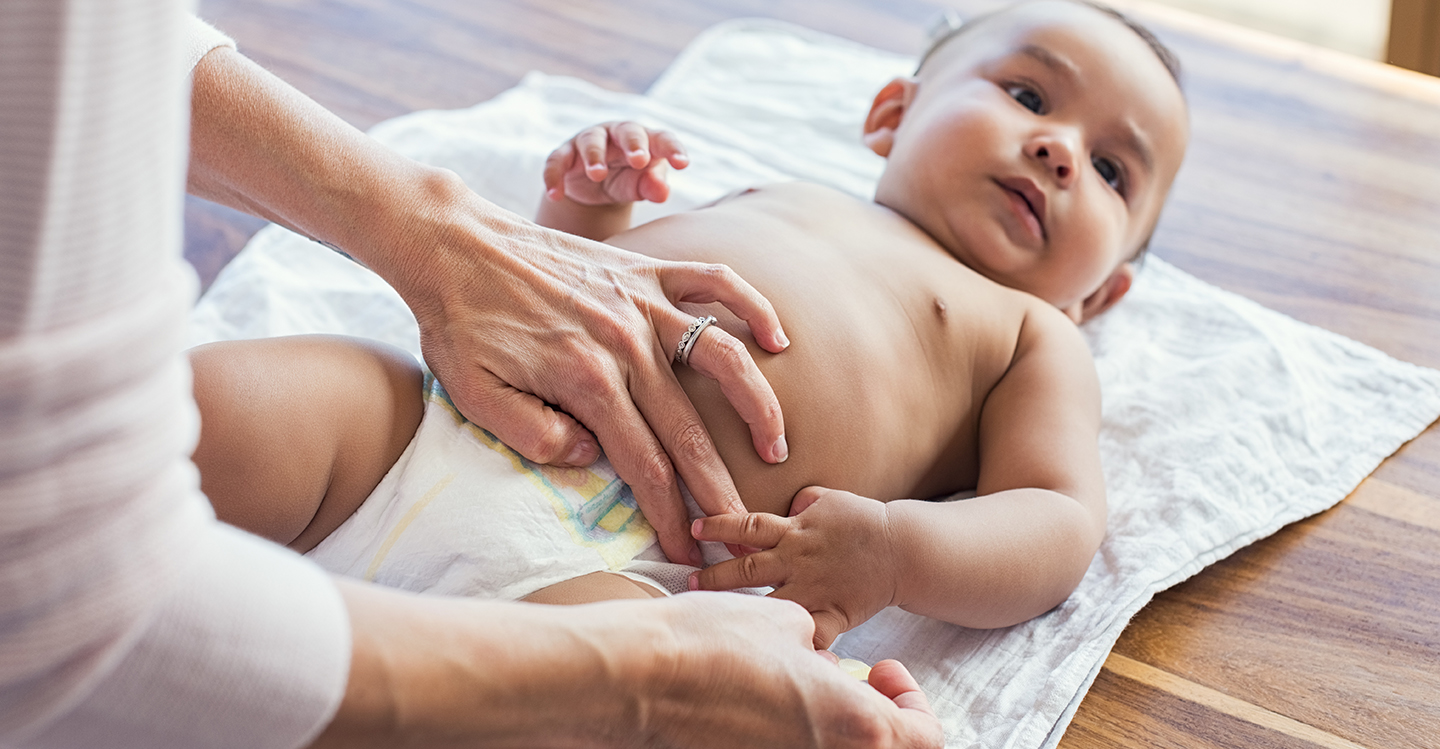The first nappy changes
Newborn babies feed frequently and in small amounts. This can result in highly variable toilet habits and anywhere up to eight changes or more per day.
Your baby’s first poos will consist of meconium – the waste product of amniotic fluid and other nutrients that has built up inside them during their time in the womb. Meconium will appear black and tar-like and often won’t smell like poo. This is normal, and once your baby starts breast or formula feeding the appearance, smell and consistency of their poo will change too.
Newborn babies have very delicate and sensitive skin, so it’s important to change them at the first sign they need it. A good routine to develop is to check them after every feeding session.
Cleaning and changing
- Gently wipe your baby from front to back with wet cotton wool, a damp cloth or disposable baby wipes.
- Either pat your baby’s skin dry with a towel or allow them to air dry for a few moments.
- Never leave your baby unattended on a change table or elevated surface.
- A good habit is to always have one hand on your baby while changing.
- If your baby is developing any redness or rashes, apply a baby friendly lotion after changing.



